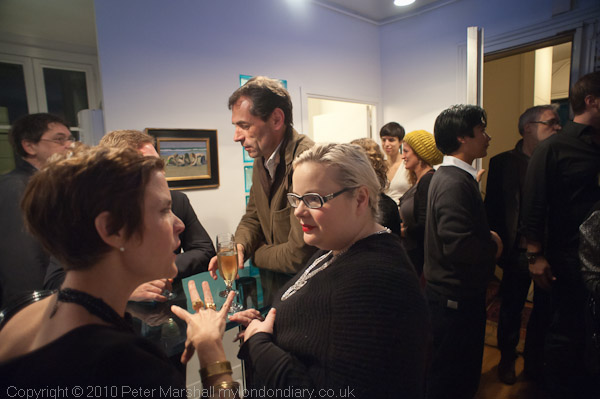
Lensculture is one of the best photographic web sites around, and Jim Casper publishes some great interviews and sets of work, and gets to know some of the most interesting people in photography from around the world. Quite a few of them were in Paris last week for Paris Photo, and quite a few were at a great party given by Jim and Millie in their flat on the rue Saint Antoine, where the champagne was flowing freely and, once I started taking pictures my shutter too.
So thanks to everyone – and Jim and Millie in particular for the invitation as well as all the others I talked to, including Joanne, Damian, Xavier, Vee, Ute, Mike, Ed, and all the others. If you are in the pictures I hope you like them, and if I missed you I apologise, but you may be pleased. Here are just a few, and I’ll put up rather more in a few days on My London Diary.
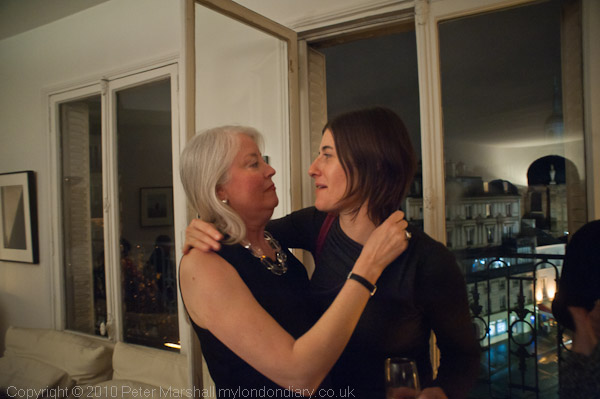
You can see the rue St Antoine through the window
Technically all these were straightforward. All with the D700 and 20mm f2.8 Nikon, everything auto using program setting at ISO 3200, which gave exposures from mostly from 1/15 f2.8 – 1/60 f4 depenidng on the room lighting and exactly where people were standing. One or two were a stop or two underexposed. I doubt if you will notice from these small images, but I used rather stronger luminance noise reduction than I normally do when processing these images in Lightroom (I’m using Release Candidate 3.3 which seems fine apart from a few quirks in File Import, which also likes to crash occasionally) and although it significantly lowers the noise, it ends up with sometimes giving skin a slightly plastic look.
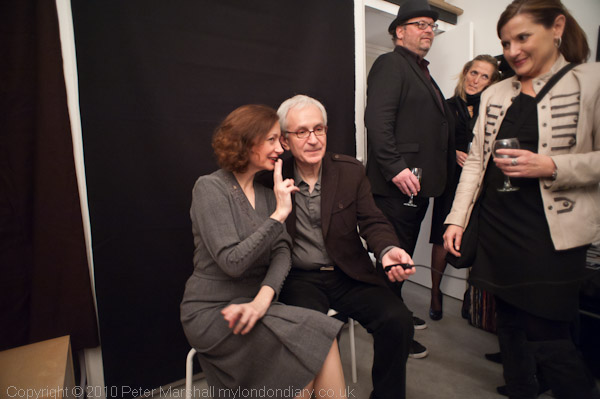
The official party photographs – guests take their own pictures
It’s something that I’ve seen too on some high-end digital images – including some of the large Brian Griffin pictures I was looking at earlier before coming to the party, which were taken on a Leica S2, £25,000 worth of kit loaned him by Leica. I wonder if it really is how skin looks, at least under certain lighting conditions, but that we are so used to seeing it with film grain that our mind demands something with a little more visual tooth?
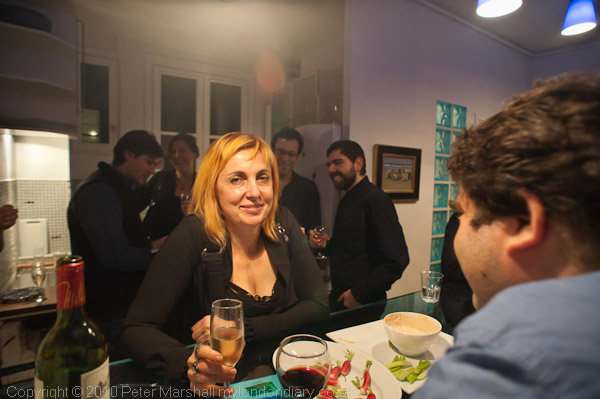
As often when photographing by available light, rooms often contain light sources with differing colour temperature, and many low energy lights in particular are pretty discontinuous sources, with big spikes in their spectral distribution as well as some fairly empty areas. The Nikon auto white balance setting usually takes a decent stab, but there is no perfect solution. Almost always if you use a neutral gray to balance the image it ends up looking too cold, and you need to add a little warmth by increasing the colour temperature – perhaps from 2400K to 2650K. It’s then generally necessary to remove a little magenta. But always the important thing is to try and getting the skin tones look healthy, if not necessarily accurate.
In situations like this, working with colour film would have been pretty much impossible, and I would have shot on black and white, probably either pushing Tri-X to its limits or perhaps these days Ilford Delta 3200. But digital makes colour at least reasonably usable.
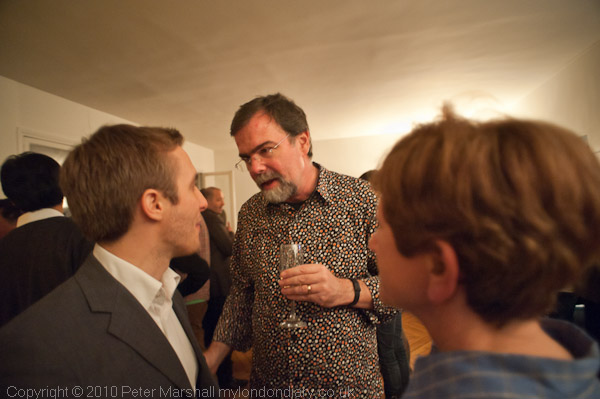
I was sorry that I had to leave the party early – at around 11.30 when things were just beginning to really get going. But our hotel was rather a long way to walk if we missed the last metro.
More pictures on My London Diary.